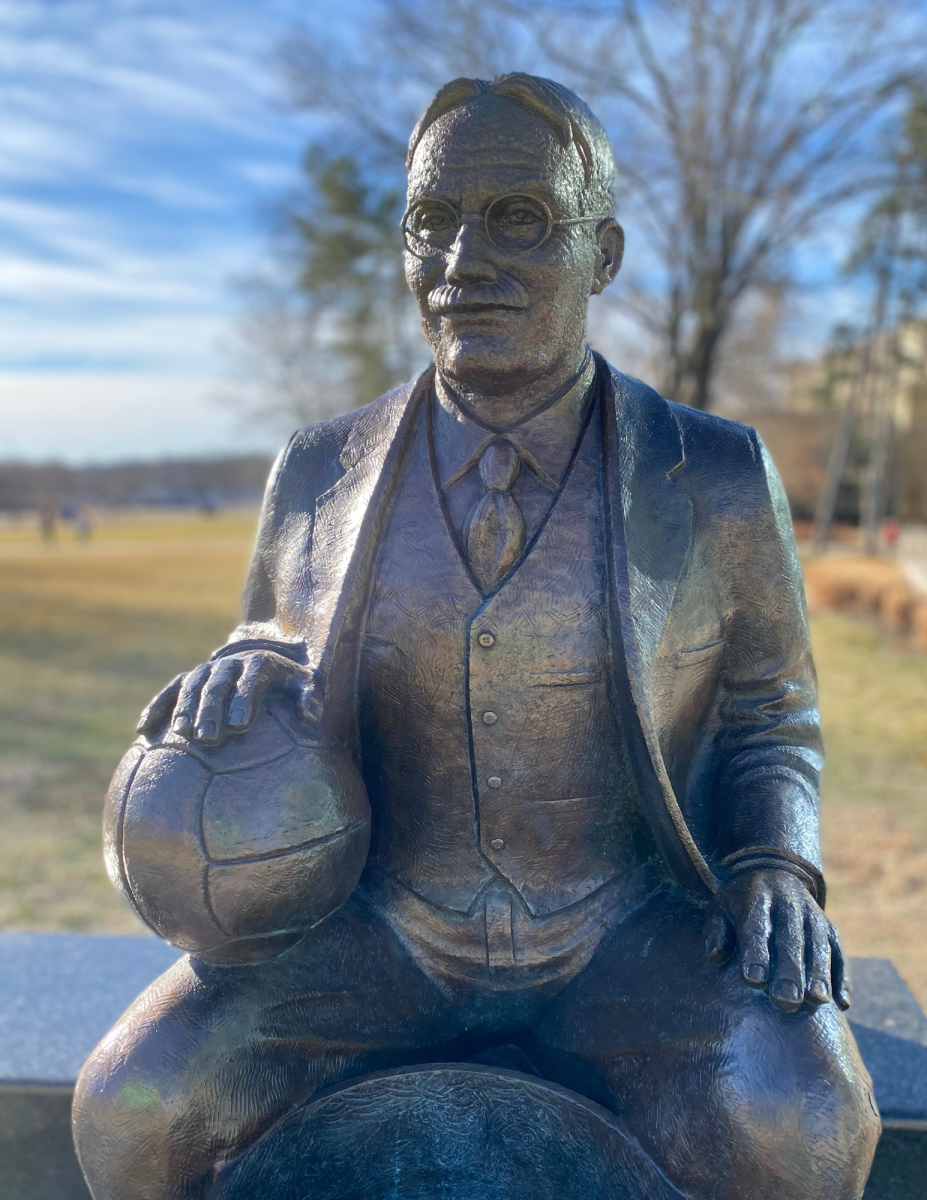It is rare, very rare, to have a physician as a university’s head basketball coach. To have two coach-physicians at the same institution, well, that’s winning-the-lottery-level unheard of.
James Naismith, M.D., earned his undergraduate degree in theology and strongly considered going to seminary before continuing his education at the Springfield, Massachusetts, YMCA Training School. There he was taught how to improve the minds, bodies and souls of young women and men through athletics. And it was there, at the Y Training School in 1891, that Naismith invented the game of "Basket Ball."

Naismith's Original Rules of Basketball. On display in The Rules Gallery at The DeBruce Center.
Naismith’s mentor at the YMCA had a medical degree and encouraged James to attend medical school. Why not study physiology and medicine? It made sense to the young man who dreamed of becoming a leader in athletics and leaving the world a better place.

Desk of Dr. James Naismith. On display at Watkins Museum of History, 3rd Floor.
Naismith headed to Gross Medical College in Denver, attending 1895 through 1898. He moonlighted as director of the local YMCA. After receiving his M.D. he took his talents to K.U. where he assumed a long list of duties as the basketball coach, athletic director, professor of health, and chapel service leader. Naismith did not actively practice medicine, but put his knowledge to good use by instructing students about good health practices.

Sculptor: Elden Tefft. Tefft died before completing this piece; his son, Kim Tefft, finished it in 2016.
During the flood of 1903, the Kansas River bridge was washed out. Naismith learned of a young girl in North Lawrence who was in urgent need of medical attention. He and several others set out to cross the raging river in two small boats. One of the boats was swept downstream, and it was feared that Naismith was lost. Word spread back to town of this tragedy and family friends and their pastor gathered at the Naismith home to comfort James’s wife, Maude Naismith. Several hours later, however, Naismith made his way home. He came through the front door, muddy and wet but unharmed, having successfully cared for the child before recrossing the river.

Damage from the 1903 flood. Lawrence, Kansas photographs collection, RH PH 18, Kenneth Spencer Research Library, University of Kansas
Naismith’s coaching protege, Phog Allen, was encouraged by Naismith also to attend medical school. Two years into his coaching career, Allen took a three-year leave of absence to get his degree from the Central College of Osteopathy in Kansas City. Forrest C. Allen, D.O. then incorporated into his coaching many principles of good nutrition, effective workouts, and body positioning. His book, My Basket-Ball Bible, included a section on sports medicine. Mickey Mantle was one of many professional athletes he treated at his office at 13 E. 8th St. downtown.

Sculptor: Kwan Wu, 1997. He also sculpted the baseball players at the Negro Leagues Baseball Museum in Kansas City.
As you walk from Naismith Drive into Allen Fieldhouse and gaze on James Naismith Court, remember the foundation two doctors built for the winningest men’s basketball program in the country.

James Naismith and Phog Allen portrait, 1932. Photo courtesy of University Archives, Kenneth Spencer Research Library, KU
Places to Visit
Sources:
Rains, Rob. James Naismith: The Man Who Invented Basketball
Kerkhoff, Blair. Phog Allen: The Father of Basketball Coaching
KU Libraries Digital Collections. University Archives Photographs.
KU Libraries Digital Collections. Lawrence Photographs Collection.






